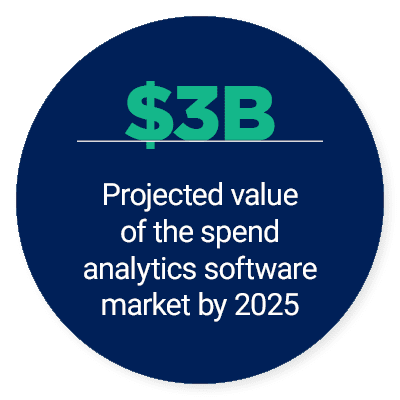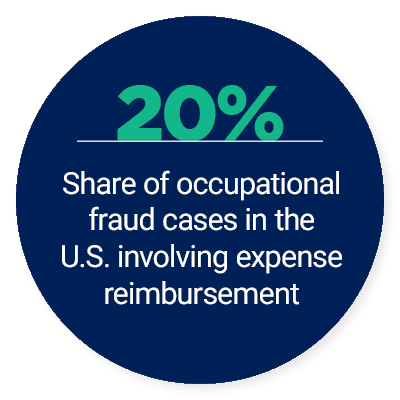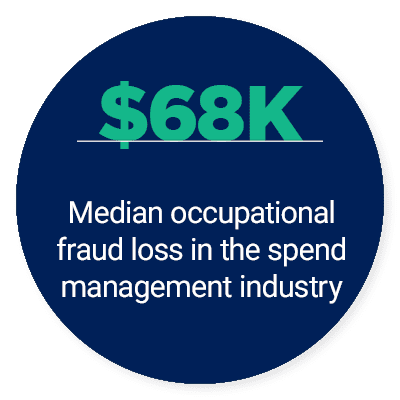
 Manual expense reports remain plagued with pain points for the employees and employers who must file them. It is thus unsurprising that 95 percent of companies are looking to improve their spend management software this year. The amount of data needed for these reports continues to increase as well, and employees need to juggle paper receipts and outdated expense processes to fill their reimbursement claims, adding additional frictions.
Manual expense reports remain plagued with pain points for the employees and employers who must file them. It is thus unsurprising that 95 percent of companies are looking to improve their spend management software this year. The amount of data needed for these reports continues to increase as well, and employees need to juggle paper receipts and outdated expense processes to fill their reimbursement claims, adding additional frictions.
This rising amount of data also means a higher probability for mistakes to be made: 9 percent of all expense reports filed in 2019 had erroneous or false data attached to them, according to one recent report. Companies are thus looking to technologies like artificial intelligence (AI) and machine learning (ML) to help mitigate this.
In the latest Workforce Spend Tracker®, PYMNTS examines how these technologies are filtering into the spend management industry as well as the other changes taking place among providers jostling for dominance in an increasingly crowded market.
The Latest Workforce Spend News
Developments in the expense management world are heating up. Six expense service platforms have recently joined together to form a travel expense solutions provider, called Emburse, which will compete against other major services providers in the industry, including SAP Concur. The platform was created by Abacus, Captio, Certify, Chrome River, Nexonia and Tallie. Each of the six firms will continue to retain individual operations at present.
These six companies are not the only ones looking to challenge SAP Concur, which currently holds the highest market share within the travel expense industry. Fellow expense service Coupa has also made moves in this area, announcing it has acquired Seattle-based FinTech Yapta to innovate its tracking and spending software. The acquisition comes as both Coupa and SAP Concur search for new technologies such as cloud-based solutions to increase the speed and efficiency of their expense  software.
software.
What employees are submitting for reimbursement is changing as well. Food and similar expenses remain high percentages of receipts submitted, but the top category for spending among workers is now ridesharing, according to one recent report. Trips taken on Uber alone accounted for 12.6 percent of all transactions reported on expense sheets in 2019, according to the report. Other travel costs, such as airline or train tickets, also remain top categories for this type of spend.
Visit the Tracker’s News And Trends section to find more about these and other stories.
Using Cloud Technology And Data Analytics To Help Rebuild Storm-Damaged Homes
Conventional construction crews are ill-equipped to handle the type of damage that fires, floods and other potentially catastrophic events can cause to buildings. That’s where restoration companies like Paul Davis, Inc. and its more than 300 franchises across North America come in. The company is increasingly turning to technology to quickly mobilize resources in the field, including cloud-based reporting systems and fuel cards to streamline its expense reporting and improve its fleet management.  Learn more in the Tracker’s Feature story.
Learn more in the Tracker’s Feature story.
Putting AI To Work In Spend Management
One reason travel and expense management has been ripe for digital innovation in recent years is that it has long been dogged by friction points like paper receipts and invoices, paired with complicated and lengthy reimbursement procedures. This is why AI shows promise in the realm of expense management. Workers in the field are using it to read and process paper receipts, and it is being employed in the back office to ensure compliance and root out fraud. Check out the Tracker’s Deep Dive to learn how AI-powered solutions can increase convenience and productivity while also reducing the costs of fraud and avoidable errors.
About The Tracker
The Workforce Spend Tracker® showcases the shifting spend management solutions landscape and how improved services are affecting SMBs’ in-field expense management, back-office operations and bottom lines.